Beware: These Common "Healthy" Menu Items Aren't Actually That Good for You
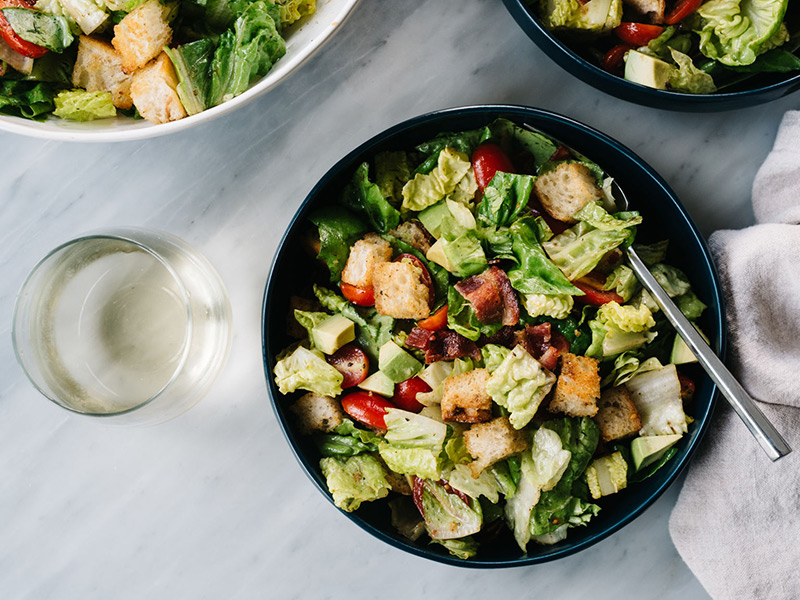
Dining out can be so much fun, especially if it's a restaurant you've been dying to try or an old standby where you're a regular. Sure, there's nothing like a home-cooked meal, but there's something exciting about heading to a restaurant (and not having to do the dishes afterward). Plus, now, a lot of restaurants have so many options, especially for people with certain dietary restrictions, so there's something for everyone in your party. Gluten-free? There are options. Vegetarian or vegan? Some places specialize in just that. Eating smaller portions? A couple of chains have "small bites" menus now, and don't discount the power of tapas.
While a lot of dining establishments have a lot to offer in terms of "healthy" foods, there is such a thing as ordering wrong if you're trying to eat right. Some foods disguised as good for you might actually be packed with not-so-good-for-you ingredients. To find out how to be mindful when dining out, we enlisted the help of nutritionists to see what common "healthy" menu items could actually wreck your diet and what to watch out for when you're ordering these meals.
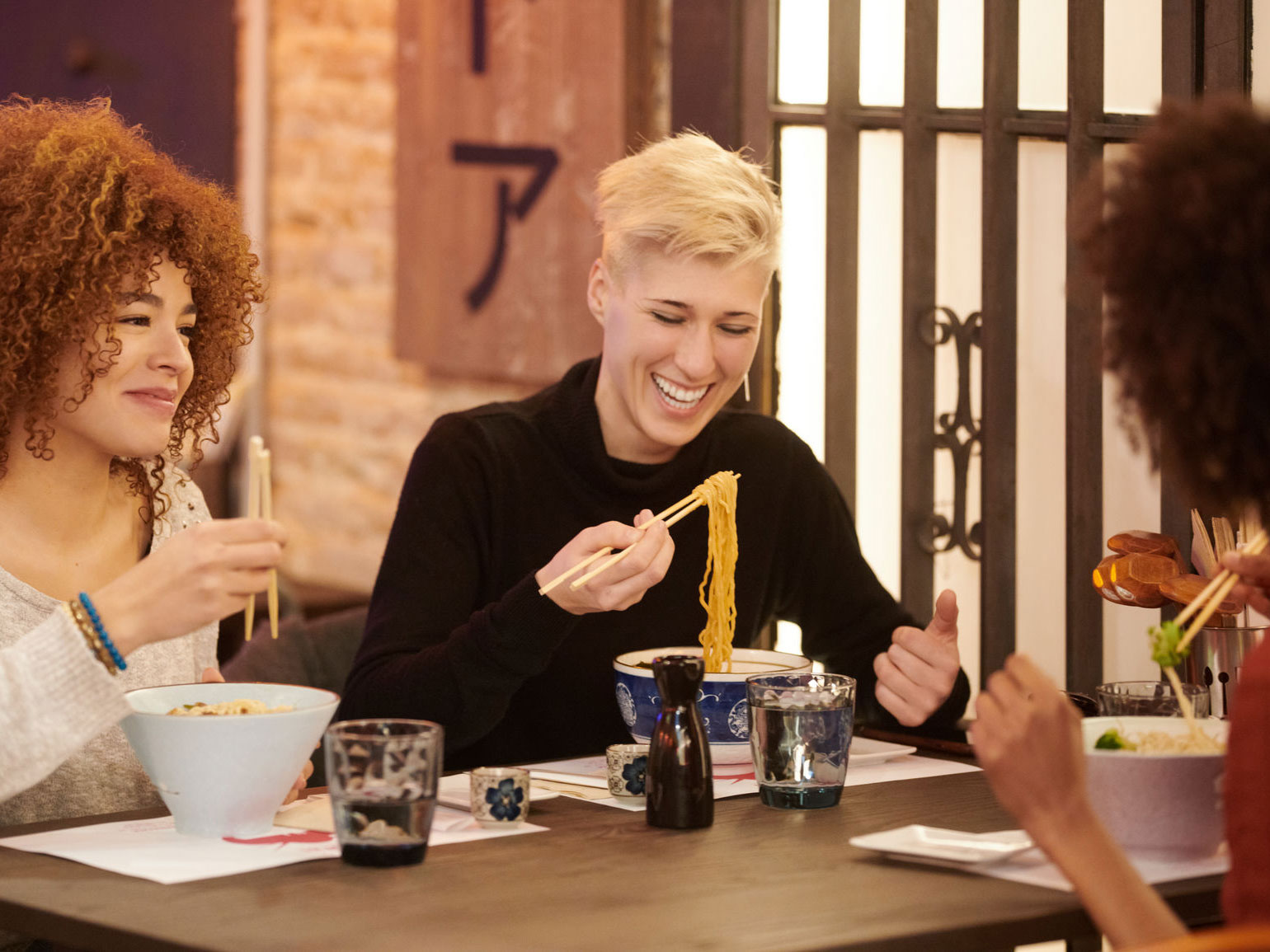
Sometimes these items could be the best choice on the menu—so while it might not fit exactly into your healthy eating plan, you probably don't have another option, other than not eating at all. In general, the nutritionists we spoke to said the most important thing to ask when ordering out is how is the dish prepared? This is especially helpful if you have specific food or dietary restrictions. "[What might not be good for you] can be anything from a chicken breast or piece of fish to veggie side dishes and salads! It always depends on the preparation, the amount of fat used, and of course, the sodium," says Amy Shapiro, MS, RD, CDN, founder and director of Real Nutrition.
While some restaurants include calorie counts, don't let them fool you. "Ignore calorie counts. Look at the menu item and the actual ingredients in the dish. Focus on quality!" advises Nathalie Rhone, MS, RD, CDN, founder of Nutrition by Nathalie. "They usually exclude the macronutrient breakdown. Don't order the grilled cheese over a salad loaded with nuts and avocado just because it is 250 calories. Calories are not as important as the ingredients themselves! Think about it this way: Not all calories are created equal—100 calories of broccoli are very different than 100 calories of potato chips!"
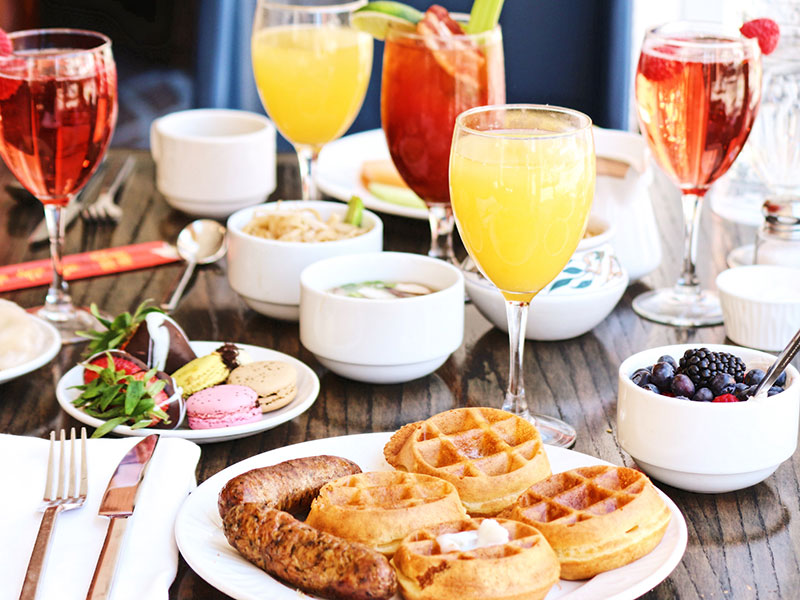
Most importantly, you shouldn't stress too much about the menu offerings. "There may not be a 'perfect' option available on the menu, but that's okay! Do the best with what you have, and think about the health benefits of connecting with people, socializing, enjoying your food, and having fun because these are just as healthy and important as your morning green juice. Stressing will disrupt your hormones and digestive system, so eat out, live your life, and enjoy!" says Rhone. The gist is to just be mindful of what's in each dish and to make substitutions or do without where you see fit—choose what's best for you.
So now that you have all of that information, take a look at the common "healthy" foods and ordering recommendations for each below.
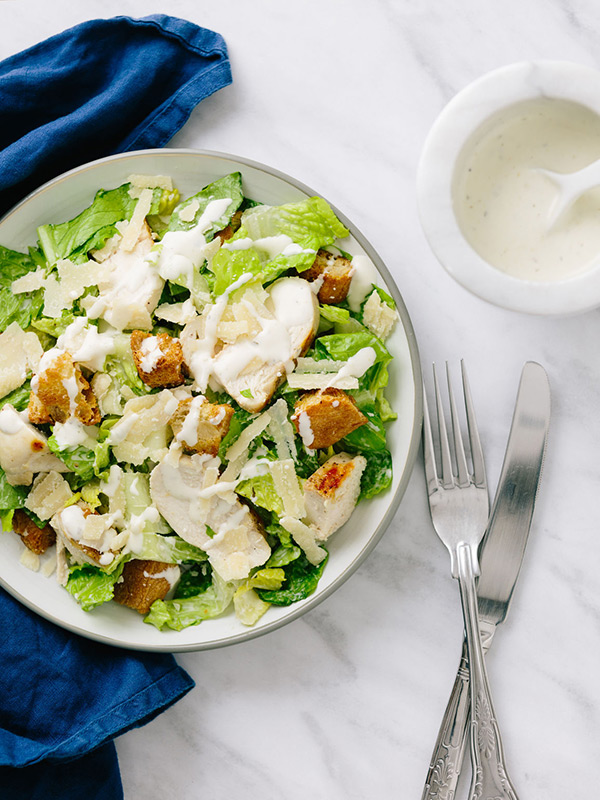
Salads are always a lighter choice, but sometimes they can be on the same "healthy eating" level as burgers. It all depends on the toppings. "Just because there is a base of lettuce on the bottom of a dish does not mean the meal is healthy. Consumers need to watch out for high-fat dressings, fried croutons or onion strings, bacon bits, dried fruit, wonton crisps, and other sneaky add-ons. These additions can transform a healthy option into a major sugar, sodium, or saturated fat bomb," says Rhone.
In particular, Caesar salads are staples on most menus, but they can also be dangerous. "They may be heavy, loaded with a creamy dressing, croutons, candied nuts, and extra cheese. Also, depending on the restaurant, the dressing might not be made in-house, which means it could be made with processed vegetable oils and loaded with added sugar," Rhone says. "The safest bet is to go with olive oil and vinegar, or a vinaigrette-based dressing. A good rule of thumb is to not go with anything too thick and creamy or white in color." Another option Samantha Franceschini, MSCN, a nutritionist and health coach at Parsley Health recommends is to BYOD: bring your own dressing. Again, that depends on where you're eating out since some places might not allow that.
If you're going to opt for a salad, pay attention to the toppings, keeping in mind the more vegetables, the better. "I always say pick one 'treat' for your salad and then ask for the dressing on the side or use oil and vinegar and measure your own," Shapiro suggests.
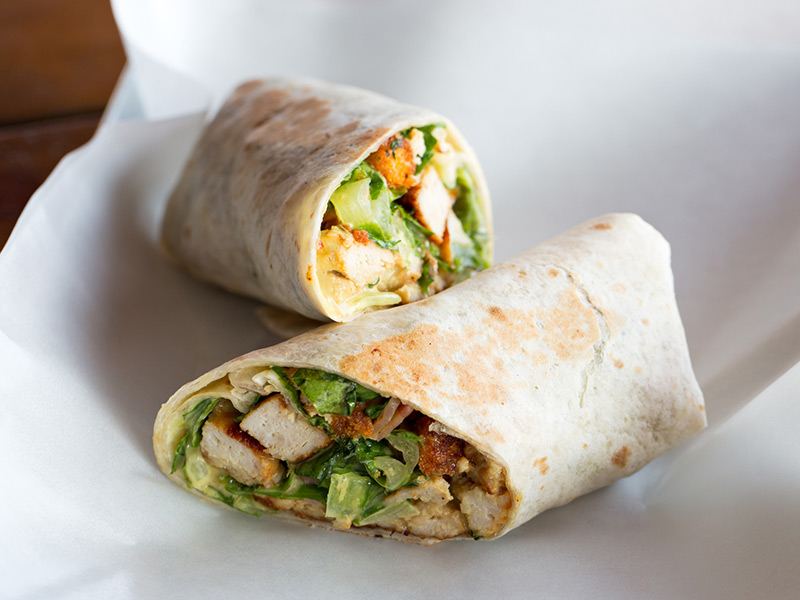
You might think of wraps as low-carb options, but sometimes they aren't the healthiest choice. "Wraps often have over 300 calories, but because they are flat, they have this healthy halo effect," Shapiro says. "I recommend skipping wraps for a few reasons: With sandwiches that have a top and bottom, it is easy to eat them 'open-faced' (get rid of the top, save calories). With a wrap, you can't do this. Restaurants also overstuff wraps to make them look tasty, so you often overeat. Even if [they are] whole-wheat or spinach, they are mostly made out of white flour with processed ingredients. If you want to eat a wrap, I recommend making them at home yourself and using Food for Life brown rice wraps, seaweed wraps, or even coconut wraps. Siete Family Foods tortillas are also a favorite."
If wraps are the best you can do with the menu you've got, pay attention to what's inside them when ordering. "Choose wraps that are filled with simple, whole ingredients like fresh vegetables, spreads like hummus or tahini, leafy greens, and lean protein options," Rhone says.
It doesn't hurt to ask about substitution options. "If you are looking to lower your bread intake, ask your server what options they have for substituting bread from your meal," Rhone recommends. "You can ask if a sandwich can be made into a salad, or if they can wrap the sandwich with lettuce or collard greens instead of bread. Or if sticking with bread, instead of choosing rolls, subs, or bagels, opt for whole-grain wraps or bread."
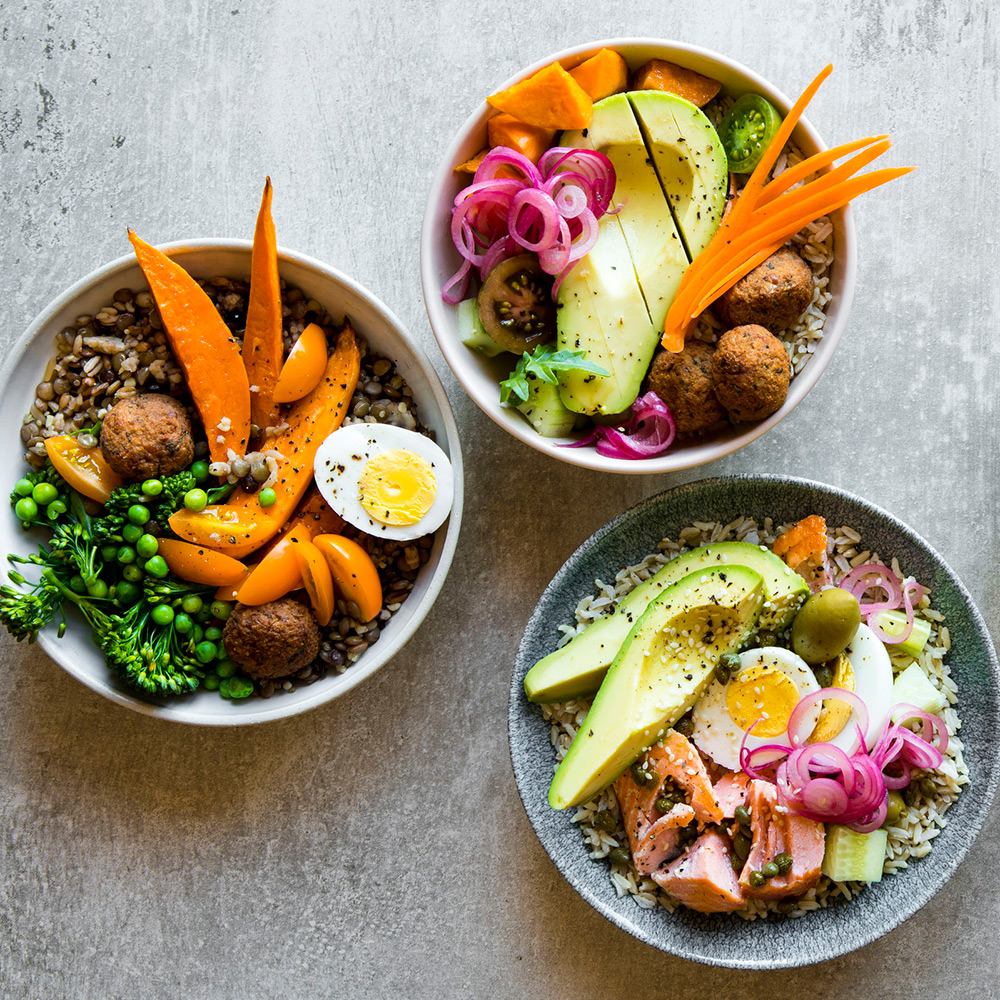
These can be deceptive. "People usually think that if they're eating at a vegetarian restaurant that the food is automatically going to be healthy. This isn't necessarily the case," Rhone says. "Vegan food can still be high in sugar, sodium, and saturated fat—after all, fried or highly-processed food can still be vegan! The increasingly popular meat alternatives can be highly processed and full of inflammatory ingredients. Instead, choose whole-food protein sources, like lentils, beans, wild-caught fish, or free-range chicken or eggs."

"While many veggie burgers are packed with healthy ingredients like legumes, different kinds of vegetables, and whole grains, the ingredients can vary drastically between brands and kitchen recipes. When in doubt, ask your server what's in their veggie burgers or which brand they use. A quick check of the ingredient list will tell you everything you need to know," Rhone says. "Stay away from veggie burgers with a long ingredient list and choose veggie burgers made with whole foods, prepared with healthier oils like olive oil, and that are flavored with real ingredients like onions and roasted garlic."
As for the new meat options out there that are made to mimic the texture and taste of meat, Rhone says the ingredients might not be the healthiest for you. "To mimic meat, the Impossible meats are packed with ingredients like soy-protein isolate, processed vegetable oils, and methylcellulose. Instead of choosing an Impossible meat option, opt for a healthy veggie burger, fish dish, or the real deal: well-sourced meat!"
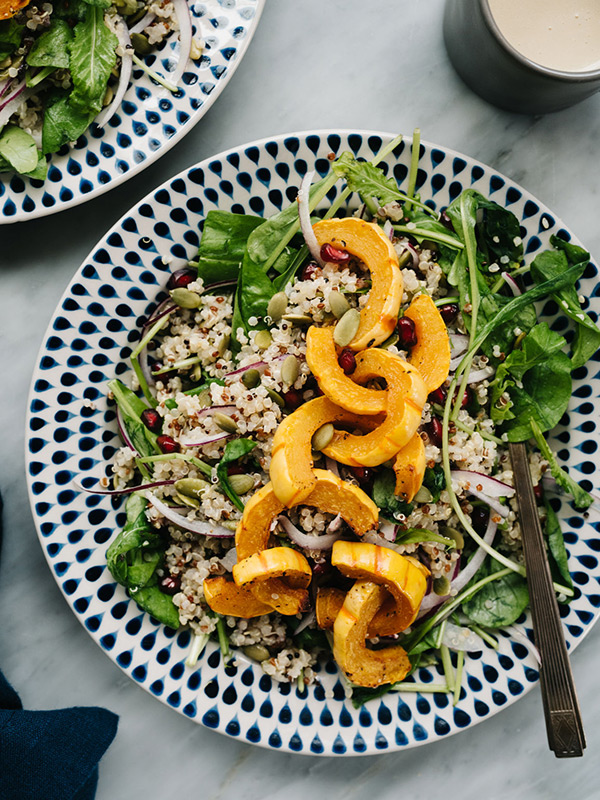
These can be solid choices, but again, the toppings and serving size are key to their health factor. "The portion size of rice or grains is often triple what we need," Shapiro says. "I recommend asking for half the rice or grains they usually serve or subbing them out for greens." Before ordering, you'll also want to ask about the toppings or sauces. "Ask what they use in their sauces," says Franceschini. "Are their sauces dairy- or gluten-free? Sometimes it's not the food per se, but the topping."
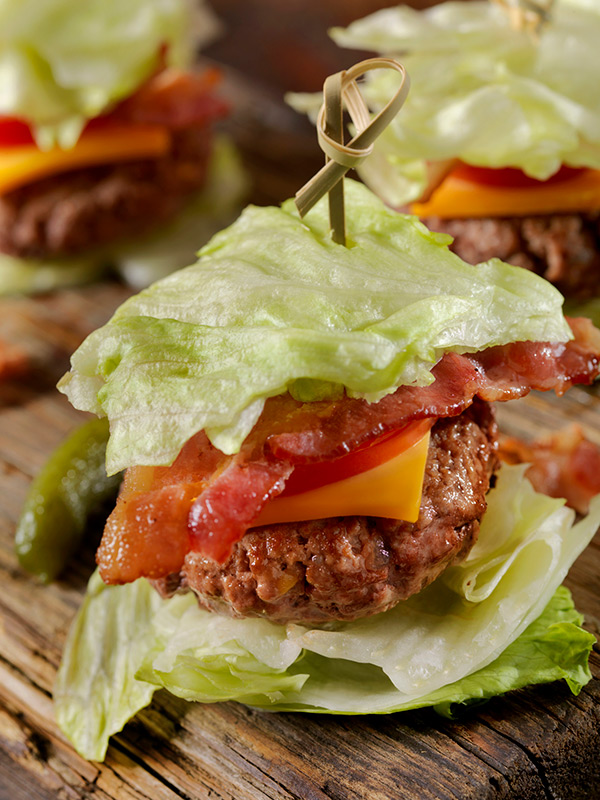
Nowadays, you can ditch the bread and bun for just the meat, or some restaurants offer lettuce wraps. This is perfectly fine, but there are some caveats, of course. "This option is always appealing, but healthy carbs are not the enemy! If you find yourself craving carbs and restricting by ordering the bun-less burger, be careful not to overdo it with the fries, chips, or other sides. Sometimes it's just better to get the bun and feel satisfied, rather than giving yourself an excuse to overeat something just as bad or worse later on. However, adding in extra greens to a meal is always a win in my book!" Rhone says.
Shapiro adds, "This can be a very healthy way to go since you are often removing empty carbs when you do this. The tricky part here is not adding excess fat or 'treats' like cheese or sauce because you feel like you can since you eliminated the carbs. Also, portions of protein here tend to be more than you need to make up for the elimination of carbs."
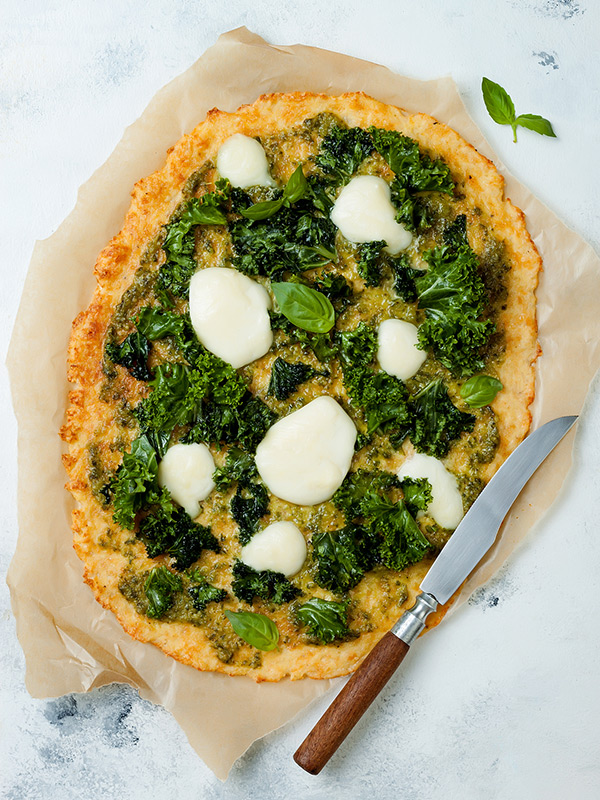
"Especially in New York City, you'll find restaurants using trendy healthy foods to make less-healthy dishes catch your attention. Try not to be fooled! Dishes like kale pizza and broccoli pizzette are still pizzas—just ones with a few veggies on it," Rhone says.
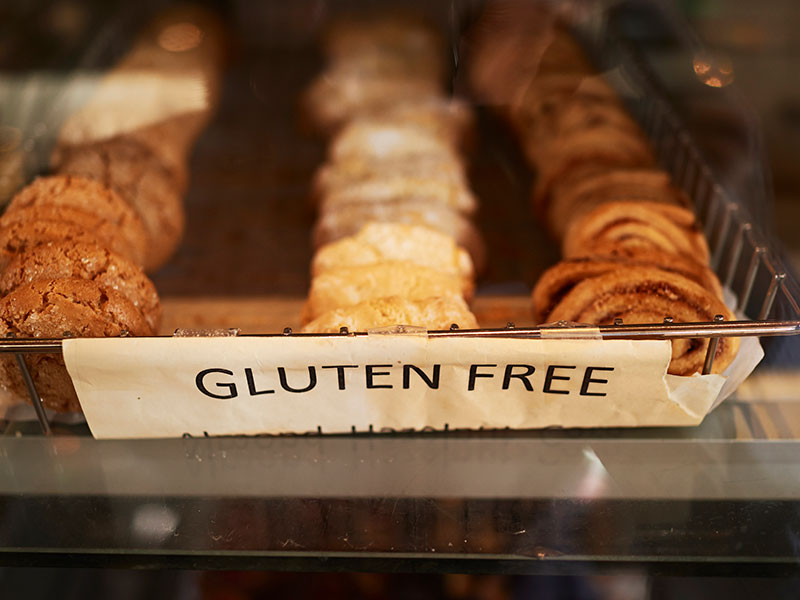
It's great that there are so many options out there now for people who are gluten-intolerant or have celiac disease. Just remember that gluten-free doesn't necessarily equal healthy. In fact, sometimes gluten-free pasta or bread is made with binders or added ingredients to make the taste and texture similar to their counterparts.
"These can be very healthy, but again, look for unhealthy items that are added in order to make these items taste decadent. So look out for creamy sauces, excess cheese, poor gluten-free sources like rice or potato, and added ingredients and hidden carbs or fat," Shapiro advises. "Cauliflower crust definitely does not equal straight-up cauliflower. There is often cheese and carbs stuck in there too, and we often eat more since we think it is healthier."
When deciding on what to eat, Rhone suggests choosing meals that are naturally gluten-free. "There are times when swapping for a gluten-free option is a great choice. For example, choosing a brown rice pasta or zucchini noodles over a white-flour pasta gives you tons of extra nutrients and fiber. It is better to opt for naturally gluten-free foods, like quinoa, brown rice, zoodles, or lettuce wraps, instead of replacing one form of gluten for a more processed option."
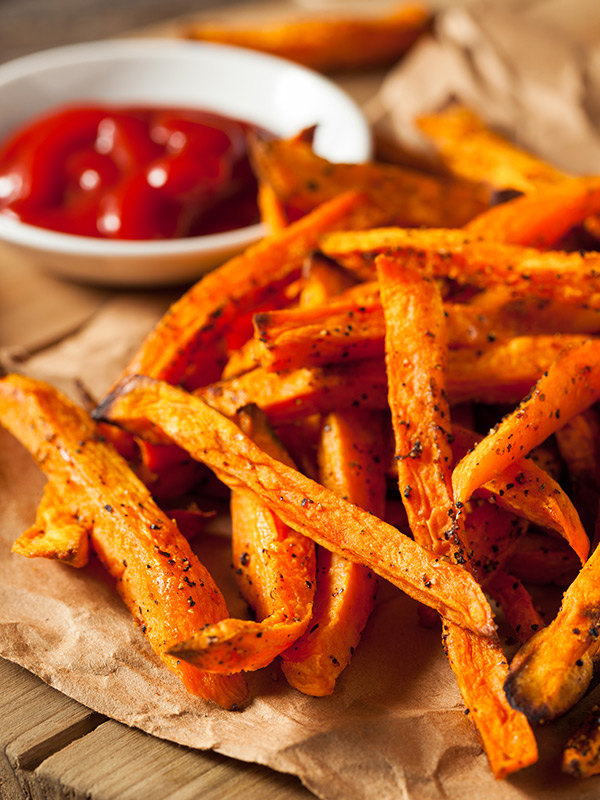
Unfortunately, even the sweet potato ness doesn't make them completely healthy. "Although they are an important carbohydrate, rich in resistant starch and vitamin A, when deep-fried, the amount of processed oils often cancel out the benefits. It's best to go with baked sweet potato fries," Rhone says.
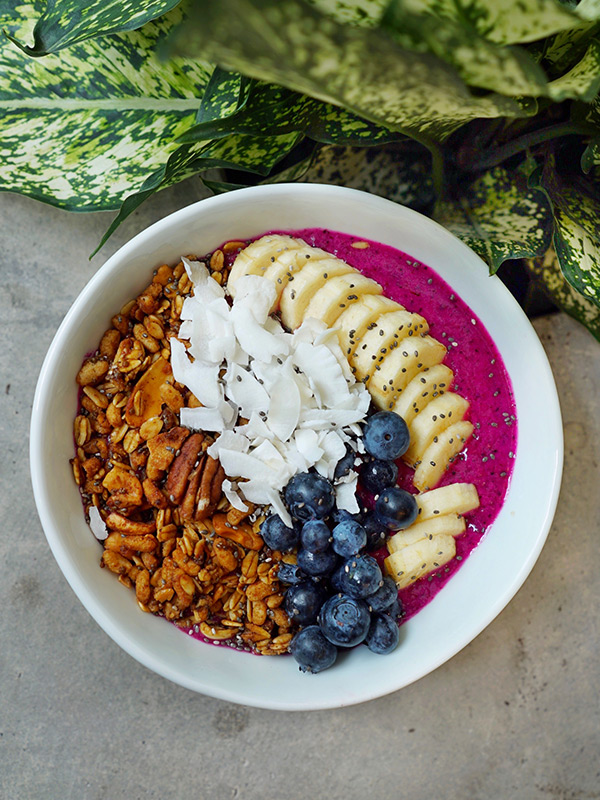
You're better off creating these at home. It might even save you some money, too, since they can be pretty pricey. "Despite the trend, and while these might be good to make at home, açaí bowls and smoothies from juice shops and restaurants can be loaded with extra sugar from too much fruit, granola, and even frozen yogurt. Oftentimes, they lack the added greens, proteins, and/or fats that provide extra nutrients and keep you full," Rhone says.

While fish has plenty of nutrients and might be a better option than fatty red meat, it all depends on how it's cooked. "Fish is filled with omega-3 fatty acids, vitamins D and B12, and it is a great source of minerals. However, the preparation of fish makes all the difference when it comes to keeping the meal healthy," Rhone says. "Stay away from fish that has been fried or is prepared in a heavy sauce like a Francese sauce or garlic butter. Choose fish that has been baked and seasoned with fresh ingredients like lemon, olive oil, and fresh herbs."
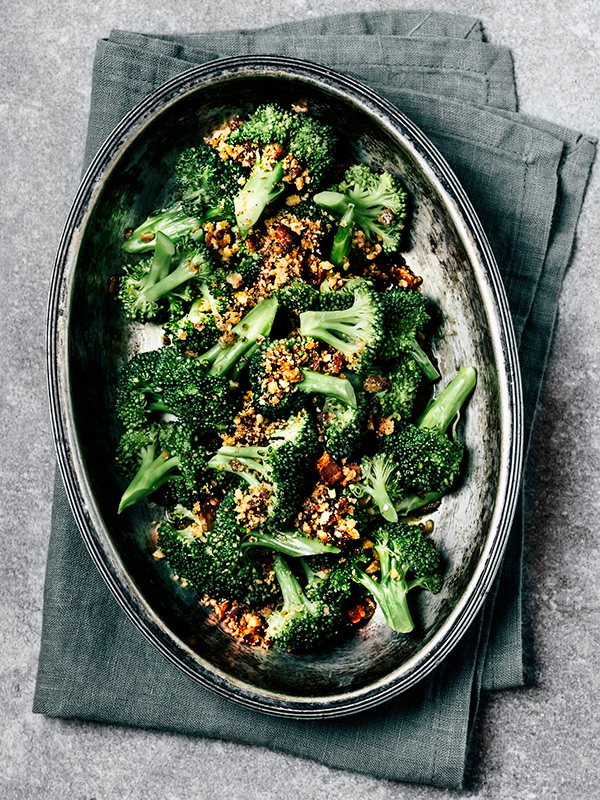
Veggie sides are great to order to complement a main dish, but again, it's all about preparation. "While they're always my favorite, it may be helpful to ask how they are prepared. Many times they are fried, smothered in cheese or cream, super high in sodium, or loaded with bacon. This is not to say don't order the vegetable sides—just be aware that they can be deceiving," Rhone says.
Next up: These "Healthy" Foods Are Actually Scams
This article is provided for informational purposes only and is not intended to be used in the place of advice of your physician or other medical professionals. You should always consult with your doctor or healthcare provider first with any health-related questions.
Sarah is lifestyle writer and editor with over 10 years of experience covering health and wellness, interior design, food, beauty, and tech. Born and raised in Los Angeles, she attended New York University and lived in New York for 12 years before returning to L.A. in 2019. In addition to her work atBest Knockoff Luxury Clothing , she held editor roles at Apartment Therapy, Real Simple, House Beautiful, Elle Decor, and The Bump (sister site of The Knot). She has a passion for health and wellness, but she especially loves writing about mental health. Her self-care routine consists of five things: a good workout, “me” time on the regular, an intriguing book/podcast/playlist to unwind after a long day, naps, and decorating her home.